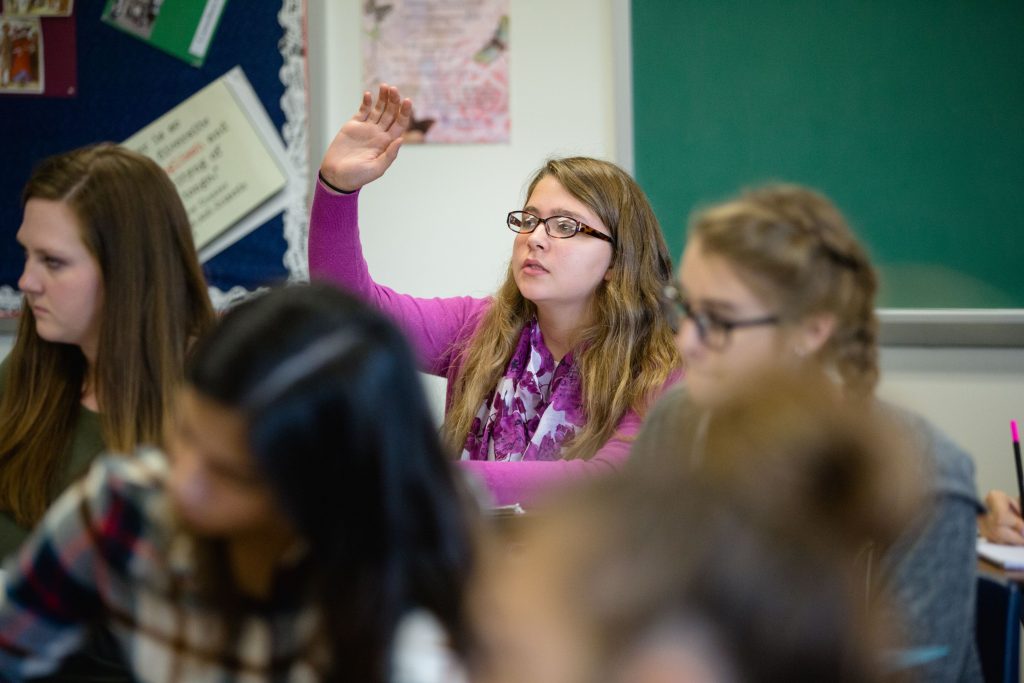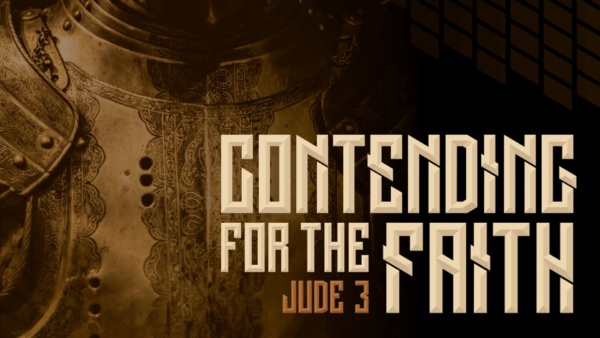Teaching a biblical worldview in schools is becoming increasingly vital to Christian education. Christian Smith, a sociologist at the University of Notre Dame, led a group of researchers for about a decade as they followed the religious development of a group of American young people. Smith published three books on what he found. The last one, Lost in Transition, was published in 2011. What he says in that book confirms what many similar studies have reported over the past 20 years: Young adults do not believe in moral absolutes.
Losing the Faith
We would all like to believe that this trend runs around our own Christian communities. But there is reason to believe it runs through them—at least to a certain degree. In a study published in 2006, The Barna Group concluded that 61 percent of young people who grew up in church disengage from church in their 20s.
Why is this happening? Ken Ham and Britt Beemer argue that churches—even the most conservative—are not defending the Christian faith. They are teaching students to trust in Jesus for salvation, but they are not defending the Bible against the claims of modern unbelief. It is not that these churches do not believe the Christian faith. They do. But they are not doing a good job of showing young people how to think biblically about all of life.
Ham’s conclusion makes sense to me, and it fits with my own experience. Over the past 15 years, I’ve worked at BJU Press in curriculum development and in consulting. An important part of this job is consulting many different Christian schools. I help them improve their integration of faith and learning. As I have worked with teachers, I have noticed a common problem. Christian schools tend to focus on integrating biblical thinking into character development but not into teaching the subjects themselves. If a teacher uses a Bible verse in a lesson, it is likely to correct student behavior, not to help the student understand the subject. The Bible is included primarily to develop a Christian environment for learning, not to develop Christian learning.
The Two-Story View
Why is this the case? There are many reasons, but one reason seems to rise to the top of the list, in my opinion. Many Christian educators think about reality in terms of a two-story view. Instead of seeing the world unified and whole, they tend to see it divided into two broad categories—an upper story and a lower story. In the upper story are sacred things: prayer, evangelism, church work, personal growth in godliness. In the lower story are secular things: regular jobs, science, culture, the academics. The upper story contains the things that matter to God and that should matter to Christians. The lower story is full of things that don’t matter to God and that Christians should hold at arm’s length.
So long as a believer looks at reality in this way, he will not be good at integrating faith and learning. The reason for this is that in the two-story view, the Bible is upstairs and academic learning is downstairs. The teacher may get the Bible into the classroom (by applying it to spiritual growth and church work). But he won’t be able to show students how classroom learning is related to the teachings of Scripture.
This is no tiny flaw. The two-story view debilitates any school where it is found. Why? The two-story view is a Christian form of secularism. Secularism is the belief that public life should exclude religious considerations—from things like science, government, culture, society and the academics. Secular humanists believe in this exclusion because they are convinced that religion (especially the Christian religion) breeds ignorance and oppression. Society cannot be free and thriving unless religion is kept chained to the private sphere of life—a sphere characterized by private prayer, personal spirituality, and church work on the weekends.
Believers in the two-story view do not think that Christianity is wrong or harmful. But they still exclude their Christian beliefs from the teaching of the academics, culture and society. They do this because, to them, it is the sacred upper story that must be distinctively Christian. The secular lower story is a neutral realm where religious belief has little or no impact on analysis or evaluation. Their motive for separating faith and learning is different from the secularist’s, but the end result is similar. When it comes to the private sphere, students are to think like Christians. But when it comes to learning the facts about the public sphere, they are led to think like secularists.
Biblical Worldview Shaping
How do we solve this problem? In my own work of consulting and development, I have found the phrase biblical worldview shaping to be helpful. Integration, I have learned, suggests to many that the Bible just needs to be added to the learning—something that can be done with the two-story view left intact. Worldview, however, suggests we teach Christianly only as we shape the students’ perspective on math, science, language arts and history.
Public schools teach all of these subjects from the storyline of secularism—or from the perspective of evolution. In Christian schools we should teach these subjects from Scripture’s storyline—or from the perspective of Creation, Fall and Redemption. To do this well teachers must have an approach to each subject that rethinks the philosophy behind each subject.
Developing a Worldview Scope and Sequence
In order to use the ideas I’ve mentioned, a teacher must first think through a given course and identify the key big ideas—the worldview themes—of that course. A recent course on government at BJU Press included the following themes: the purpose of government, ideologies, church and state, and the role of institutions. A course in physical science included the orderliness of nature, the role of modeling, and ethical issues in science. A world history course included the themes of justice, power, citizenship and environment.
Once a teacher identifies the key worldview themes, he needs to develop several paragraphs that state the scope of his coverage of these themes for the course. I have found that structuring these scope documents by Creation, Fall and Redemption can be very helpful in clarifying how a biblical worldview helps a believer understand the big ideas in a course of study. Under the heading of Creation, the teacher can express how a particular theme would be understood without the distortion brought in by the sin and misery of our fallen world. Under Fall, he can discuss how sin corrupts and complicates this theme. Then under Redemption, he should state how a Christian can respond to these corruptions and complications using biblical wisdom to guide him.
But a worldview scope alone does not a Christian course make. Not only must the teacher figure out what he will teach, but he must also plan how to distribute that teaching throughout the course. He must sequence each theme throughout the course so that the students will have a deep understanding of the worldview ideas by the end. Early in the course, the teacher may require students simply to recall or explain elements of the worldview themes. In the middle of the course, he should require students to evaluate controversial aspects of these themes—the aspects that are complicated by the Fall. Toward the end, the teacher should require students to formulate a Christian understanding of the themes and even apply that understanding to real-life situations.
If a teacher carefully develops the worldview scope and then intentionally plans its sequence, the students will be required to reckon with a Christian way of thinking and living. That’s the goal.
The Importance of Collaboration
I wish I could say that the process just described is easy. It’s not. It takes time, and it requires a set of skills that very few people possess on their own. The teacher must be a subject specialist, a theologian and an educational expert. And how many people are like that? So, collaboration is key. The worldview scope and sequence should be the work of several people. Teachers and administrators must sit down together to hammer out ideas, critique each other’s work, and chart the path ahead. The task is not easy. But the most important things in life never are.
References
The Barna Group. “Most Twentysomethings Put Christianity on the Shelf Following Spiritually Active Teen Years.” The Barna Group, 2006. Retrieved from https://www.barna.com/research/most-twentysomethings-put-christianity-on-the-shelf-following-spiritually-active-teen-years/.
Ham, Ken, and Britt Beemer. Already Gone: Why Your Kids Will Quit Church and What You Can Do to Stop It. Green Forest, AR: Master Books, 2009.
Smith, C., et al. Lost in Transition: The Dark Side of Emerging Adulthood. Oxford, UK: Oxford University Press, 2011.








